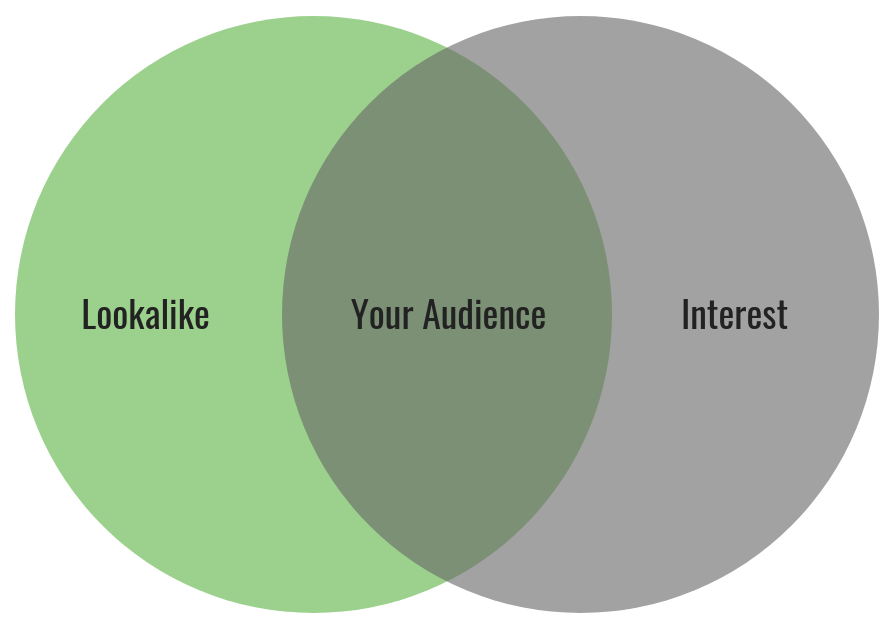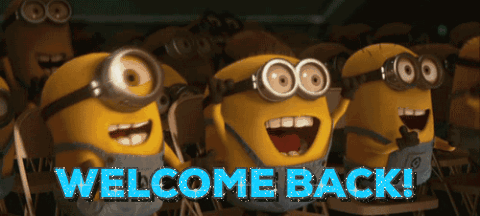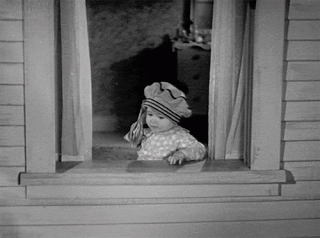Getting the right offer in front of the right person at the right time.
It’s one of the most important aspects of good marketing.
On any platform.
And Facebook makes it especially easy to get your offer to the right person… regardless of where they are in your buying cycle.
But with so many Facebook ad audience options, it’s easy to overlook certain audiences that might crush it for you.

Here are 29 Facebook ads audience segments that you should consider to optimize your Facebook campaigns.
(NOTE: everything mentioned in this article works for Instagram also. So for simplicity’s sake, we’re just going to say Facebook. But you’ll know the truth.)
With Facebook marketing, as with any other marketing, it’s important to think about how your campaigns move people through the 3 stages of the buying cycle:
1) Awareness
This is the stage that people become aware of your product or service for the first time. At the awareness stage, you want to target cold audiences who have never heard of you or seen your product. The goal here is to get them to interact with your brand and develop an emotional interest or desire for your product.
And of course, you’ll also want to start getting some conversions here as well.

2) Consideration
The Consideration stage is when you nurture people who have already engaged with your brand or product and start convincing them to buy.
At this stage, we want to provide “logical” reasons to help the customer justify purchasing your product.
Remember that most people are more emotional than logical about their purchases. But they want to justify their purchases with logic.
So this is where we give them reasons to logically justify that purchase with things benefits like customer reviews, free shipping, discount codes, free returns, etc. We also want to just show them the product again because sometimes people just need to see something a few times before they decide to buy.
3) Conversion
At the Conversion stage, it’s time to target those people who have been on the fence about making a purchase and push them over the edge to convert.
It’s important that you organize your Facebook ads to target people in each of these 3 stages.
OK, so now that we have a brief understanding of the 3 stages of the funnel, here are the audiences you should consider target organized according to the stages of the funnel.
Cold Facebook Audiences (Awareness)
1) Interests / Behaviors / Demographics
Interest targeting enables you to target your perfect customer avatar based on everything that you think you know about them. Facebook has so much data about each of their billions of users and now us advertisers can use that data to grow our businesses.
In theory, there are hundreds of ways to approach interest targeting.
- Competitors
- Books or magazines your audience reads
- Professional organizations
- Job titles
- Hobbies
- Age and Gender
- Relationship status
And sooooo many more. Unfortunately, it’s a little out of the scope of this article to go into all the Interest audience strategies you can use.
When you’re just getting started with your business, Interests are your best way to identify your ideal audiences. But when you have a bit more data collected, then Lookalike audiences are often a better option…
Lookalikes
Lookalike audiences are probably the most powerful targeting tool that Facebook offers. They’re so important and effective that they need their own section for this article.
In a nutshell, Lookalikes are audiences that Facebook’s algorithm creates for you based on a Custom Audience that you provide. Basically, you provide Facebook with a list of the types of people that you want to find more of and then the algorithm crunches hundreds of data points to find more people who look like your original audience.
Obviously, in order for your Lookalike to be as effective as possible, you’ll want to start with the most relevant, high-value base audience possible.
When you create a Lookalike audience, you’ll want to start with 1% size. That means that you want to target the 1% of people in your target country who are most similar to your base audience. Iny the United States that will give you about 2.1 million people. Most other countries will be much smaller.
Stick with the 1% Lookalike until you’ve found success with it. Then you can scale up to 2%, 3% and ultimately up to 10% Lookalikes.
Keep in mind though that depending on your realistic potential market size, you may never be able to scale beyond. 1%.
I know it sounds like hocus pocus. But it really does work like magic.

Here are a number of audiences that you can create Lookalike audiences based on. The following list is ordered (in my opinion) from most effective to least effective.
2) Lookalike based on Purchase Event
Targeting ads at a Lookalike based on your people who hit your Purchase Event is one of the highest converting audiences we see for most Ecommerce businesses. That’s because if your goal is to get more people to complete a purchase event, then it makes sense to create an audience similar to people who have already completed that same conversion event.

In general, you’ll want to create the lookalike based on people who hit the conversion event in the past 180 days (the maximum timeframe possible). That’s because with more people in the base audience, the will be more data points the algorithm has to work with to create stronger correlations.
3) Lookalike based on Complete Registration or Lead Event
If you’re promoting a service or SaaS (Software as a Service) business, then you’ll most likely be optimizing your campaigns for Lead conversion events or Complete Registration events. If that’s the case, then you’ll want to create a lookalike from people who have already take that action.
4) Lookalike based on your Customer Email List
In addition to targeting a Lookalike based on people who hit your conversion pixel, you’ll also want to target all your past customers based on an uploaded CSV file with all their names, emails and phone numbers.
The difference between your customer email list and the conversion pixel is that your email list can include customers from more than 180 days ago (your pixel data doesn’t).

You can also include qualified leads who never became customers in this group because you are looking for more people similar to them.
5) Lookalike based on Website visitors
If you don’t have many past customers yet on your email list or your pixel, then you can start with a Lookalike based on people who visited your website in the past 180 days. It won’t be as high quality but it’s a good starting point if you’re already getting good quality traffic.
6) Lookalike based on Newsletter Email Subscriber List
Your email list is another group of people who have express interest in your business. If you have more than 1000 emails on your list, then try building a lookalike from those people.
7) Lookalike based on Facebook Fans
If you have more than 1000 real fans on your Facebook page, then you can build a lookalike based on those people.
Keep in mind that you’ll only want to target similar people if your Fans are real fans. If you ever bought fake fans from Fiverr or other sources, then don’t bother with the strategy.
8) Lookalike based on Video Viewers
One way that people express interest in your products or services is by watching your videos on Facebook. So making lookalikes based on people who watched your video can be a solid strategy.
However, keep in mind that Facebook counts a view as someone who watches only 3 seconds of your video even if the sounds was off. That’s not a very valuable view. So make sure to only build the Lookalike from people who watched a significant amount of your video (50%, 75%, or 95%).
9) Overlap Lookalike and Interests
This is probably your “lowest hanging fruit” when it comes to cold audiences. When we’re getting started testing for a client, this is usually the first audience that we like to test with.
You’re basically using a combination of Facebook’s idea of your best audience (Lookalike) and your idea of your best audience (interests).

The audience might not be too large (we usually aim for at least a few hundred thousand people), but it does have a great chance for converting. Once we have new ads that succeed testing here, we start to scale them to some of the other broader Lookalike audience mentioned above.
10) Open Targeting
After we’ve seen success with interests and Lookalikes, it’s time to start scaling.
If you’ve been running an offer that’s relevant to a broad audience and you’ve been successful at generating lots of conversions on your pixel, then Open Targeting might be for you…
Open Targeting basically means that you don’t give Facebook any audience guidance.
No Interests. No Lookalikes.
You’re basically targeting everybody in the United States.
I know it sounds crazy. But as long as you’re optimizing for conversions, Facebook can often deliver ads to the right people and generate tons of new conversions for you.
Test it and see how it works for you. But remember this is only for after you’ve had success with Lookalike audiences (including using broader 2% of 5% Lookalikes).
11) Trade or Buy pixel data from other companies
Did you know that you can share your pixel data with other ad accounts? Have you ever considered contacting another non-competing business with a similar audience to yours and paying them for access to retarget their website visitors? Obviously these people would be cold audience to you (since they don’t know your business yet), but it’s a great way to identify a valuable relevant audience.
12) Purchased email list
Disclaimer: Technically, this is against Facebooks terms of service and we won’t do it for our clients. However, buying a list of quality prospects and uploading it as a custom audience can be very effective. If the list is large enough, you can also build a Lookalike from this audience.
Warm Facebook Audiences (Consideration)
13) Retarget Website Visitors
People who visit your website are generally the most common warm retargeting audience. Try segmenting your audiences based on the time since they visited (7 days, 30 days, 180 days, etc) to see what works best.
Website visitors are your easiest and usually your most valuable warm audience. And they just hanging out on Facebook and Instagram waiting for you to bring them back to your offer.

14) Retarget Blog Readers
You can retarget specifically people who read your blog but didn’t visit any of your product pages or your homepage.
You can also get more granular by creating different audiences for people who visited blog posts about specific topics. For example, on a marketing blog like this, I can create one custom audience based on URLs that include the word “facebook” and another audience from URLs with the word “seo.” Then I can retarget each group with an offer relevant to them based on the content that I know they’re interested in.
15) Retarget Visitors Who Spent More Than 10 Seconds On Page
Facebook doesn’t create this audience for you organically.
However, with a little basically coding (or using Google Tag Manager), you can create a custom conversion event that doesn’t load until 10 seconds after the page loads. This can be especially relevant for websites that get a lot of traffic and only want to retarget those visitors who are most engaged.
16) Retarget People Who Visit Category Pages
This strategy will be most relevant if you run an ecommerce store. You can create unique custom audiences for your most popular category pages. Then you can create specific ad sets targeting those people with products for the specific categories that they visited. We consider these people to be warm and not HOT because they haven’t necessarily visited a specific product yet.
17) Retarget People Who Watch Videos
One of the reasons that we love running video ads at the top of the funnel (in addition to that fact that’s they’re great for product awareness) is that we can build audiences of people who watch the video and then retarget them.

Generally, we’ll want to only retarget people who watch at least 50% or 95% of the video (depending on the length of the video) so that we know people were actually engaged with the content.
18) Fans of page
Assuming that you’ve acquired your fans naturally and organically, they can be a great audience to get conversions.
These are people who raised their hand to say they like you. That means they probably want to buy your product or services as well.
Just remember that depending on the size of the audience, you might not be able to effectively spend much budget there.
19) People Who Engage With Your Facebook Or Instagram Profiles
Facebook allows you to create audiences of people who recently engaged with posts on your Facebook or Instagram profiles. These can be people who liked, shared, commented, clicks, etc.
It’s not a high level of engagement. But you don’t want to ignore them.
20) Newsletter Subscribers
If they signed up for your email newsletter, then they’re interested in your company. Be sure to target these people in the middle of your funnel.
Just upload a CSV file of emails and get started.
21) Prospect / Lead Email List
Similar to Newsletter subscribers (but even warmer), these are people have expressed interest in your products.
Hit em up!
22) People Who Did (or didn’t) Fill Out A Lead Gen Ad
Did you know that when you use Facebook’s Lead Gen ad unit, you can create audiences based on the people who opened your form and didn’t convert as well as people who did convert.
It could definitely be worthwhile to retarget those people who didn’t complete the form.
You can even create lookalikes from the people who completed your lead form.
Hot Facebook Audiences (Conversion)
23) Cart Abandoners
People who started purchasing from your site but who didn’t complete the purchases are probably your hottest audience that’s most likely to buy from you. In order to target them, create an event for people who Added to Cart and target those people while excluding people who recently purchased.

In practice, we usually want to focus on people who abandoned carts within the past 3-14 days (because they’re most likely to complete their purchase) and exclude people who purchased in the past 14 days. You don’t want to exclude all past purchasers because you’ll end up excluding repeat customers. And that’s no good way to increase Long Term Customer Value.
24) People Who Visit Product Pages
We typically consider Ecommerce product page visitors as the minimum threshold for being a Hot Audience. Typically you can target these people based on the View Content standard event.
Dynamic Product Ads are one of the best ways to target these audiences with relevant ads.
25) Pricing page visitors
If you run a SaaS or service business, then retargeting people who visit your pricing page is a great way to promote to your highest intent visitors. If someone takes the time to click to your pricing page, then they’re probably already interested in your product or service.
26) People Who Visit A Signup Page
Similar to retargeting pricing page visitors, targeting people who visited your SaaS Signup page but who didn’t convert is a great way to go after high-intent visitors.
27) Purchase Event (Pixel)
Most people ignore this audience and they’re leaving money on the table.

Who is more likely to purchase from you than your past happy customers.
Target your customers to promote repeat purchases and to increase long term customer value. Every time you run a sale promotion, you should be targeting your recent past customer. These are people who have already purchased from you. And if they liked your product, then they already “Like and Trust” you so they’re very likely to purchase from you again. It’s a great way to get some extra cheap conversions and increase the LTV of customers.
Heck, you should be creating Flash Sales just so you can sell to these people.
Create a custom audience of people who hit your Purchase event pixel in the past 180 days.
28) Customer Email List
The reasoning here is just like targeting people who hit your conversion pixel. But uploading an email list of your customers is just another way to reach more of them.
In addition, with email, you can target people who converted more than 180 days ago (the maximum length for the Facebook pixel).
29) Recent Leads or Signups
If people have recently signed up as leads on your website, then you should immediately be warming them up with retargeting ads. Hit them with popular blog posts, tutorial videos, webinars or anything else that can move them closer to a decision to purchase from your company.
We use this approach with SaaS companies that we work with. After people sign up for a free trial or demo request, we retarget them with more specific product information that will help to onboard them and push them closer to upgrading.
Campaign Objectives and Reach
One final word about targeting before we wrap up this long post…
Regardless of the audience that you target (Lookalikes, retargeting, etc) you shouldn’t expect to actually reach all the people in your audience. That’s because when you set a campaign objective (conversions, traffic, video view, page post engagement, etc), Facebook will only deliver ads to the people in your audience who they think are likely to complete the objective that you requested.
Generally, it’s good that Facebook only delivers impressions to people who are likely to take the actions or conversions that you want.
However, if you still really want to reach a larger percentage of your audience, you can target the same audience with different campaigns using different objectives. You’ll definitely have some overlap, but you’ll reach a lot more people.
What’s next?
Remember that the Facebook ad audience suggestions above are meant to generate fresh ideas for you. You don’t need to test all of them at once.
And, depending on your business, some of them might not be right for you at all.
But it’s important to have fresh ideas and a process for testing Facebook ads.
So what’s working best for you? And what are you going to test next?
Need help setting up high converting Facebook Ad Campaigns for your business? Click the “Get Proposal” button above and let’s see how we can help you grow your business faster.


Hi Aaron,
Thanks for sharing so much info on FB ad targeting. is there a way we can target Competitors followers etc 🙂
Pingback: How the World’s Fastest Growing SaaS Companies Scale Facebook Ads
So cool. Thanks!